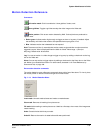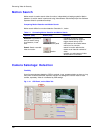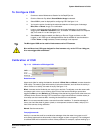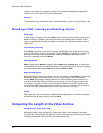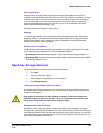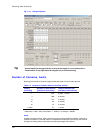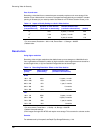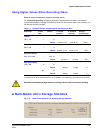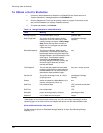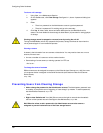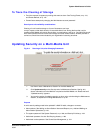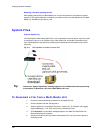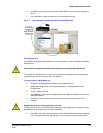
Enhancing Video for Security
126
Pan, tilt, and zoom
Recording a video feed from a camera that pans constantly requires much more storage. If the
duration of your video archive is a concern, Honeywell recommends that you consider if constant
panning is necessary to your security needs. See
Behavior of PTZ After a Session Closes, p. 93.
Table 7–5 Impact of Quality Setting on a Unit’s Video Archive
Recording Quality
(compression unit)
Duration of Video Archive
(Estimated, in camera-day)
Oldest Available Video*
(rounded to shortest time)
(weeks)
6 1441 3 years, 11 months 200
8
†
1153 3 years, 1 month 160
10 823 2 year, 3 months 110
* For one camera; Resolution = 320 × 240; Frame Rate = 1; Storage = 500GB.
† Default value.
Resolution
Using higher resolution
Recording video at higher resolutions than default uses up more storage on a Multi-Media unit.
Your organization can decide if it prefers (a) high-resolution video images that remain stored for a
shorter length of time, or (b) low-resolution images that can be stored longer.
Table 7–6 Recording Resolution: Effect on the Video Archive
Resolution
(pixels)
Video Archive*
(camera-day)
Oldest Available Video
(rounded to shortest time)
NTSC
160 × 120 4803 13 years, 1 month
320 × 240
†
1153 3 years, 1 month
640 × 240 670 1 year, 7 months
640 × 480 320 10 months
704 × 480 274 9 months
PAL
‡
192 × 144 3336 9 years, 1 month
384 × 288 801 2 years, 2 months
704 × 288 508 1 year, 4 months
704 × 576 254 8 months
* For one camera; Frame Rate = 1; Quality = 8; Storage = 500 GB.
† Default Honeywell settings.
‡ PAL images are larger than NTSC and require more storage. This accounts for a shorter archive.
See also
For estimate tools by Honeywell, see Rapid Eye Storage Estimator, p. 123.




